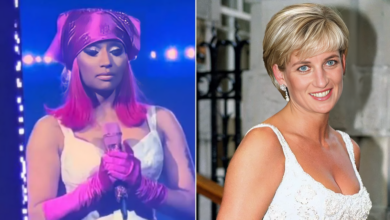Anaconda – Nicki Minaj

**Nicki Minaj’s “Anaconda”: A Provocative Anthem Redefining Pop Culture**
Nicki Minaj’s “Anaconda,” released in 2014, is more than just a song; it’s a cultural phenomenon that redefined boundaries in the music industry. A bold, provocative track, “Anaconda” showcases Minaj’s prowess in blending rap with pop while addressing themes of empowerment, sexuality, and body positivity.
**Musical and Visual Elements**
Musically, “Anaconda” is built around a prominent sample from Sir Mix-a-Lot’s 1992 hit “Baby Got Back.” This sample, instantly recognizable for its celebration of curvy women, forms the backbone of Minaj’s track. By repurposing a familiar beat and hook, Minaj crafts a song that feels both nostalgic and contemporary. Her rap verses are sharp, witty, and laden with innuendo, seamlessly flowing over the upbeat, danceable rhythm. The production, handled by Polow da Don and Da Internz, is crisp and vibrant, making it a club anthem that commands attention.
The music video for “Anaconda” is equally significant, amplifying the song’s themes through striking visuals. Directed by Colin Tilley, the video features Minaj in a variety of provocative outfits, engaging in suggestive choreography with a troupe of dancers. The video’s iconic scenes, from Minaj’s sultry jungle dance sequences to the playful kitchen scene with a banana, have sparked endless discussions and parodies. Its over-the-top sexuality is both a statement and a performance, challenging traditional norms and embracing an unapologetic celebration of the female body.

**Lyrical Content and Themes**
At its core, “Anaconda” is an ode to self-confidence and body positivity. Minaj’s lyrics are brash and assertive, flipping the script on how female sexuality is portrayed in hip-hop. Lines like “He love this fat ass” and “My anaconda don’t want none unless you got buns, hun” directly confront and subvert societal standards of beauty. Minaj proudly embraces her curves, encouraging listeners to do the same. This empowerment is particularly resonant in an industry that often pressures women to conform to specific ideals of attractiveness.
Furthermore, “Anaconda” highlights Minaj’s skill as a lyricist. Her wordplay and delivery are both playful and aggressive, balancing humor with a sense of dominance. She weaves in personal anecdotes and larger-than-life personas, creating a character that is both relatable and aspirational. This blend of authenticity and exaggeration is a hallmark of Minaj’s style, solidifying her position as one of the leading figures in contemporary rap.
**Cultural Impact and Reception**
The release of “Anaconda” was met with a mixture of acclaim and controversy. Critics praised Minaj for her boldness and the song’s infectious energy, while detractors criticized it for its explicit content. Despite—or perhaps because of—this polarized reception, “Anaconda” became a commercial success. It peaked at number two on the Billboard Hot 100 and received multiple Platinum certifications, cementing its status as one of Minaj’s most iconic hits.
The song’s impact extends beyond its chart performance. “Anaconda” sparked conversations about the representation of women in media and the double standards they face. It has been analyzed in academic settings, dissected in countless think pieces, and referenced in pop culture, from TV shows to memes. Minaj’s fearless approach to sexuality and body image has inspired a new generation of artists to embrace their identities unapologetically.
**Conclusion**
Nicki Minaj’s “Anaconda” is a landmark track that pushed the boundaries of music and visual art. Its catchy beat, provocative lyrics, and bold imagery challenge societal norms and celebrate individuality. As a piece of art, it encapsulates Minaj’s influence and the evolving landscape of pop culture, leaving an indelible mark on the music industry and beyond.




